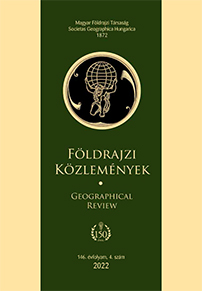Politika és tájrendezés – a Fertő-tó / Neusiedler See tájrendezési tervei 1933-ban
Absztrakt
Until the end of the 20th century, the claim that society sees its environment as a natural resource holds true in the cultural history discourses of historiography. A great example of this is Lake Fertő, whose rapidly warming waters provided a recreational opportunity for those, who are arriving there in the first decades of the 20th century. However, the lake showed signs of drying out in 1928. The issue, which has become a public problem at almost Central European level, has been followed by various newspapers and the scientific press too. The Austrian Government ultimately voted to dry the lake. Subsequently, both Austrian and Hungarian public opinion were divided into two sides: one side demanded the final drying of the lake, and the other side demanded the retention and regulation of the lakes water. In June 1933, to deal with the growing social tension, a debate on the future of Lake Fertő was held on two occasions, where representatives of both sides presented their positions. In my study, I will answer the following questions: How did the public and the scientific aera respond to the question of drying up Fertő? How did the society think about the question that has become relevant again today? Using the methods of historiography and using contemporary sources, can we promote the development of contemporary discourse?
Copyright (c) 2023 Réka Rebeka Dancs

This work is licensed under a Creative Commons Attribution-NonCommercial-NoDerivatives 4.0 International License.



